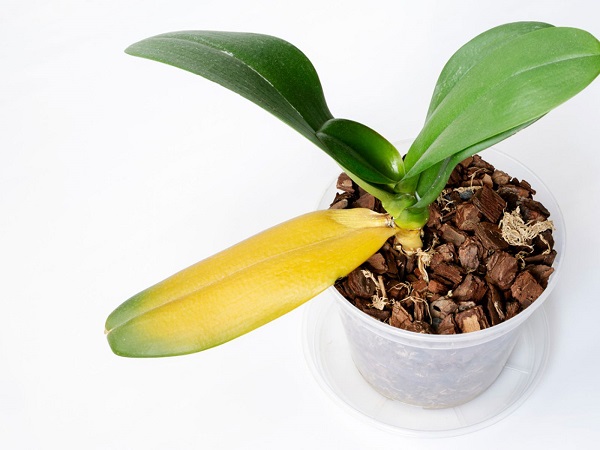
Orchid leaves can reveal important information about the orchid plant and help you to diagnose what is wrong with the plant. It is also one of the best ways to see the early signs of potentially fatal diseases.
Leaves can be yellow, blackened, or brown or they may become shriveled. Blackened leaves show their effects on the body or the tip of the leaf. If it is on the body of the leaf, it is usually due to too much direct sunlight causing a leaf to burn so move the plant away from direct sunlight. If the size of the spot(s) continues to grow then it may be a bacterial or fungal disease. If this is the case, cut off the affected part of the leaf and treat it with a fungicide.
Blackened or brown tips of the leaves could be caused by excessive minerals in the water. This is fairly common in well water so you should have the water tested. It also could be caused by excessive fertilizing, especially in cymbidiums or even a fungal infection. If it seems to become larger you need to cut off the affected area and treat the plant with a fungicide.
Leaves may also be mottled or streaked black or brown which could be caused by a viral infection. To determine this, special tests are required, and you will need to send in a leaf to a laboratory for testing. Unfortunately, there is not much available for treating this right now. The best thing to do is isolate this plant right away and if it doesn’t show improvement destroy it. Doing this will help prevent the viral infection from spreading to some of your other plants.
Yellow leaves are probably the most common ailment. This could just be a natural result of ageing, so if it seems to be happening to the oldest leaves don’t worry. On the other hand, it could also be from too much light or not enough nitrogen in the fertilizer. Other causes include being subjected to low temperatures or loss of roots. First change the lighting and potential for low temperatures. Being located by a north facing window during winter could be the cause of the problem.
Another condition that you could see in orchids are small spots that turn from reddish brown to black. These are most likely caused by fungal infection. Why humidity is needed for proper orchid growth, too much humidity favors the growth of fungus.
Pseudopods are very efficient water storage areas of the plants. If there is not enough water given to the plants or the humidity is too low the leaves will shrivel. Also, if the root system is dying you can get shriveled pseudopods.
Article Provided by Orchids-Plus-More.com.
Related Articles & Free Email Newsletter Sign Up
9 Supplies for Orchid Growing Success
How to Repot an Orchid in 7 Easy Steps
Orchid Care Made Easy for Beginners




Comment here